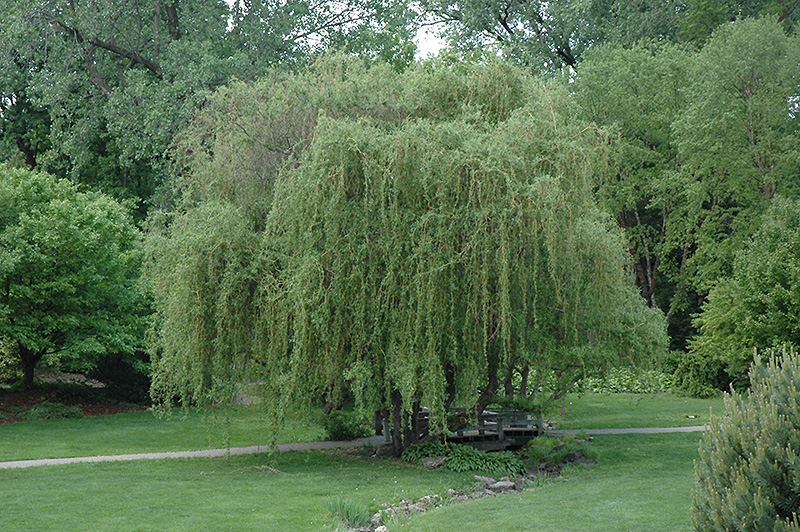Willow Tree, Golden Curls Salix 'Golden Curls' Height: 30 feet Spread: 25 feet
Sunlight:
Hardiness Zone: 4a Description: A unique specimen tree valued for its gnarled, twisted golden branches, ideal for creating distinctive winter interest in the home landscape; upright spreading habit, may shed branchlets; use as a solitary for maximum effect Ornamental Features Willow Tree, Golden Curls is primarily valued in the landscape for its highly ornamental weeping form. It has forest green deciduous foliage. The glossy narrow leaves turn yellow in fall. The twisted brown bark and gold branches are extremely showy and add significant winter interest. Landscape Attributes Willow Tree, Golden Curls is a dense deciduous tree with a rounded form and gracefully weeping branches. Its relatively fine texture sets it apart from other landscape plants with less refined foliage. This is a high maintenance tree that will require regular care and upkeep, and is best pruned in late winter once the threat of extreme cold has passed. Gardeners should be aware of the following characteristic(s) that may warrant special consideration; Willow Tree, Golden Curls is recommended for the following landscape applications; Planting & Growing Willow Tree, Golden Curls will grow to be about 30 feet tall at maturity, with a spread of 25 feet. It has a low canopy with a typical clearance of 3 feet from the ground, and is suitable for planting under power lines. It grows at a fast rate, and under ideal conditions can be expected to live for 40 years or more. This tree should only be grown in full sunlight. It is quite adaptable, prefering to grow in average to wet conditions, and will even tolerate some standing water. This plant should be periodically fertilized throughout the active growing season with a specially-formulated acidic fertilizer. It is not particular as to soil type or pH. It is highly tolerant of urban pollution and will even thrive in inner city environments. This particular variety is an interspecific hybrid. Special Attributes Willows like moist to wet soil, and their roots spread as far as the width of their canopy. Do not place closer to septic systems than the spread of the canopy plus a few feet. ![]()
![]()
![]()
![]()
![]()
![]()
![]()
![]()
![]()
![]()

